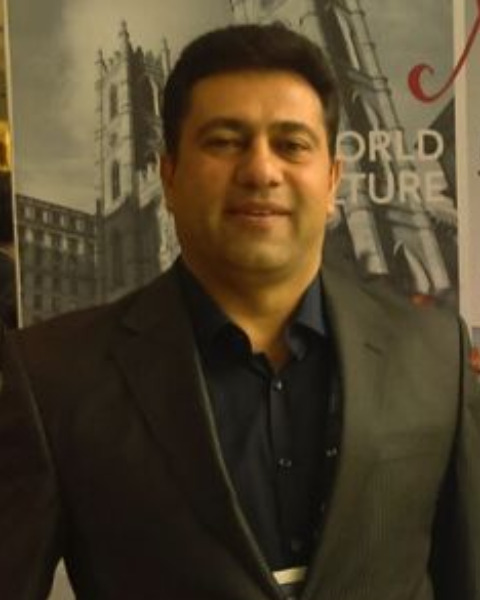Poster Networking
Arterial Thromboembolism
PB0011 - Catheter- based Q- switched- Nd:YAG laser- based photomechanical thrombolysis reduce thrombus content in the arterial atherothrombotic stenosis
Sunday, June 23, 2024
13:45 - 14:45 ICT
Room: Exhibition Hall

Hossein Mehrad
Faculty Member
Islamic Azad University- Tabriz Branch
Tabriz, Azarbayjan-e Sharqi, Iran
Presenting Author(s)
Background: Cardiovascular disease is the leading cause of morbidity and mortality worldwide. Vascular disease arises through the complications of atherosclerosis, a complex chronic inflammatory condition affecting the arterial circulation. It leads to the development of vascular lesions or atherosclerotic plaques, which manifest as asymmetrical thickenings of the intima of medium to large sized elastic and muscular arteries. Arterial thrombosis on ruptured atherosclerotic plaques can lead to acute events, such as myocardial infarction and ischemic stroke.
Aims: The aim of this study was to generate a rabbit model of common carotid artery atherothrombotic stenosis and the subsequent investigating the feasibility of Q- Switched- Nd:YAG laser- based photomechanical thrombolytic therapy in this model.
Methods: Briefly, New Zealand white rabbits were submitted to common carotid artery atherothrombotic stenosis by primary balloon injury followed 1.5% cholesterol- rich diet injury for 12 weeks and finally perivascular severe cold injury. Then treatment group underwent catheter- based Q-switched Nd:YAG laser (532 nm, 30 W, 5 ns)- based thrombolytic therapy.
Results: Results from histopathology, B-mode and color Doppler ultrasonography, showed a significant reduction in the mean value for thrombus content, blood mean velocity and a significant increase in the mean value for blood volume flow at the stenotic region in the treatment group compared with the other groups (P < 0.05).
Conclusion(s): Anti- thrombotic effect of Q-switched Nd:YAG laser (i.e. microjet, microstreaming and shock wave) induced by optical inertial cavitation- mediated collapsed bubbles, can cause to reduce the thrombus content and significantly dilate the luminal cross-sectional area of stenosis and lower treatment time in comparison with conventional tPA thrombolytic therapy.
Aims: The aim of this study was to generate a rabbit model of common carotid artery atherothrombotic stenosis and the subsequent investigating the feasibility of Q- Switched- Nd:YAG laser- based photomechanical thrombolytic therapy in this model.
Methods: Briefly, New Zealand white rabbits were submitted to common carotid artery atherothrombotic stenosis by primary balloon injury followed 1.5% cholesterol- rich diet injury for 12 weeks and finally perivascular severe cold injury. Then treatment group underwent catheter- based Q-switched Nd:YAG laser (532 nm, 30 W, 5 ns)- based thrombolytic therapy.
Results: Results from histopathology, B-mode and color Doppler ultrasonography, showed a significant reduction in the mean value for thrombus content, blood mean velocity and a significant increase in the mean value for blood volume flow at the stenotic region in the treatment group compared with the other groups (P < 0.05).
Conclusion(s): Anti- thrombotic effect of Q-switched Nd:YAG laser (i.e. microjet, microstreaming and shock wave) induced by optical inertial cavitation- mediated collapsed bubbles, can cause to reduce the thrombus content and significantly dilate the luminal cross-sectional area of stenosis and lower treatment time in comparison with conventional tPA thrombolytic therapy.
